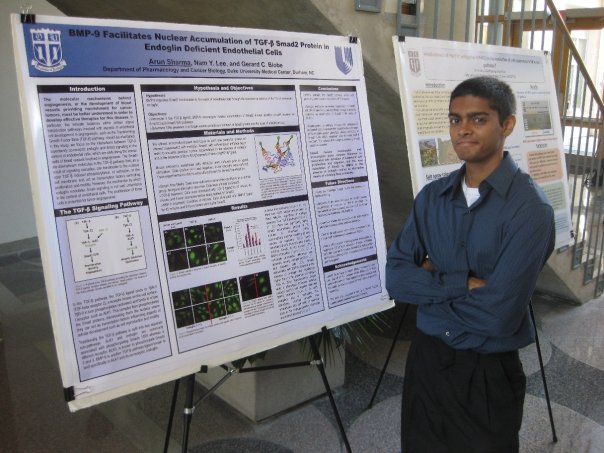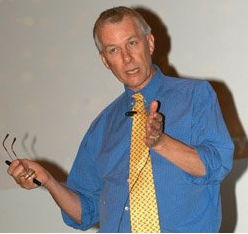By Nonie Arora
“Provocative questions,” the important but non-obvious ones, the questions to be answered by technology that doesn’t exist yet, are one focus of Nobel Laureate Harold Varmus‘s storied career these days.
What environment factors change the risk of various cancers when people move from one geographic area to another?
Why are different tissues so dramatically different in their tendency to develop cancer?
How does obesity contribute to cancer risk?
Varmus, director of the National Cancer Institute, visited Duke April 12 to address the Duke Medical Scientist Training Program 2012 Symposium and to share some of these provocative questions with a full house in Love Auditorium.
Varmus said we are in a period of rapid scientific change because “clinical research and basic research are mingled in a way that is extraordinary.” And while he acknowledged recently flat NIH budgets, he said, “let’s not worry about budgets, let’s worry about opportunities.”
For example, he cited one such scientist who looked for important opportunities, Renato Dulbecco (1914-2012), a virologist from Caltech who died recently. Dulbecco advocated for a systematic approach to sequencing the human genome as early as 1986 despite the many naysayers in the biology community. Varmus called Dulbecco, “a visionary who saw beyond the technology of the day” as he encouraged his audience to think in the spirit of Dulbecco: boldly.
Varmus spoke of how the “precision medicine” of genomics may lead to more accurate diagnoses and a new taxonomy of disease. He made the distinction clear between precision medicine and personalized medicine claiming that even his father practiced personalized medicine because he knew his patients well.
Cancer deaths are rising globally, especially in less developed countries, according to Varmus. He explained how open exchange of information with cancer centers around the world is important to solving new cancer challenges. He described how cancers are more frequently related to infectious agents in the developing world, like the Epstein-Barr virus’s relationship to Burkett’s lymphoma, and the implications for research.
To fund important but non-obvious questions in cancer research, he has launched the “Provocative Questions” Project. These questions are meant to build on specific advances and address broad issues. Because researchers can be more risk-averse when funding levels are lower, this project hopes to fund intriguing questions that would otherwise remain unfunded and unanswered.
These questions need answers. Who better to answer them than the Duke MD/PhD candidates in the audience.













